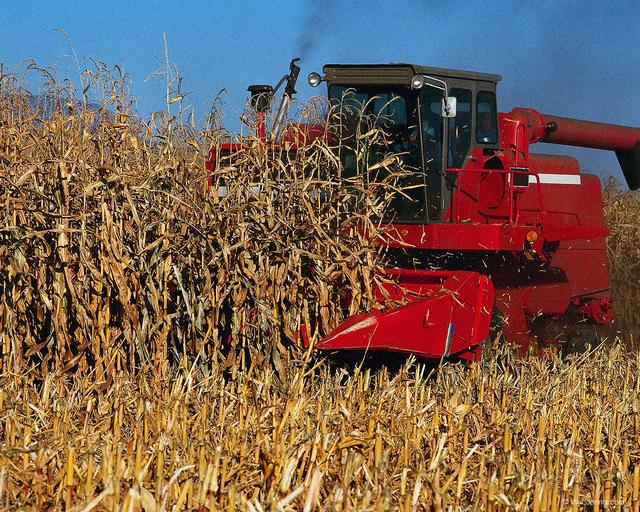
Agricultural News
As Corn Crop Grows, Prices Shrink
Thu, 11 Sep 2014 15:01:53 CDT

With the U.S. Department of Agriculture today estimating a record corn supply of 15.5 billion bushels this coming year, the National Corn Growers Association is closely tracking corn prices and fighting back against efforts that will reduce demand for the bountiful supply.
"With a record crop on the way and prices continually sinking, it is critical our federal policymakers do not cut into the ethanol standard, impose undue regulations or go slow on trade agreements," said NCGA President Martin Barbre. "America's farmers are doing our part, working hard and smart on their farms to bring in a good crop. It is critical for Washington to remove obstacles and clear a path now so we can sell America's biggest and most versatile crop at a good and fair price."
In its crop production and supply-and-demand reports released today, USDA estimated a record average national corn yield of 171.7 bushels per acre, 4.3 bushels per acre higher than last month's estimate. Factoring in 83.8 million acres expected to be harvested brings the 2014 crop at 14.3 billion bushels and the overall supply at 15.5 billion bushels.
Due to the increased production, the average farm price was lowered 30 cents on the low end and 45 cents on the high from its August estimate, to a range of $3.20 to $3.80 per bushel. The last year in which U.S. corn prices averaged near $3.50 per bushel was 2009.
Notably, the report did increase estimated demand from the feed and residual, ethanol and export sectors by 75, 50 and 25 million bushels respectively. Despite increased demand estimates, U.S. corn ending stocks are still projected to top 2 billion bushels.
Barbre cited three areas NCGA is watching in particular that impact the price its members receive for their crop and the prices paid to grow it. First, the U.S. Environmental Protection Agency proposed cutting the amount of corn ethanol in the Renewable Fuel Standard for 2014 by 10 percent. This action could set a precedent for further reductions in subsequent years.
At the same time, EPA has proposed new regulations regarding the Clean Water Act and the definition of which waters will be covered. Farmers need clarity and the proposed rule regarding "Waters of the U.S." needs to be fixed. Farmers cannot afford more regulatory uncertainty that drives up costs, Barbre said.
Finally, to help exports of corn and corn products, NCGA is pushing for modernized Trade Promotion Authority (TPA) legislation as provided in the bi-partisan Congressional Trade Priorities Act of 2014. This would improve our nation's ability to advance trade agreements that open markets for U.S. farmers.
To view the full USDA report, click here.
WebReadyTM Powered by WireReady® NSI
Top Agricultural News
More Headlines...



















